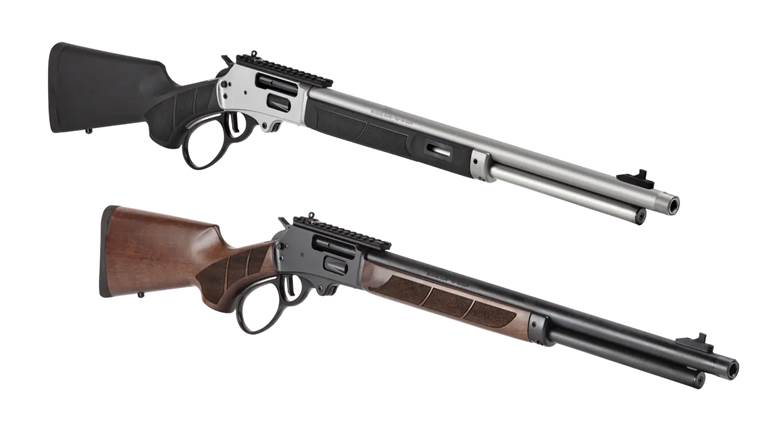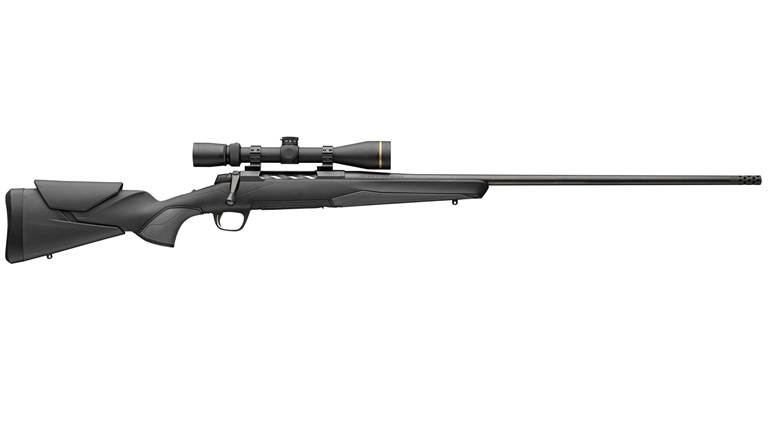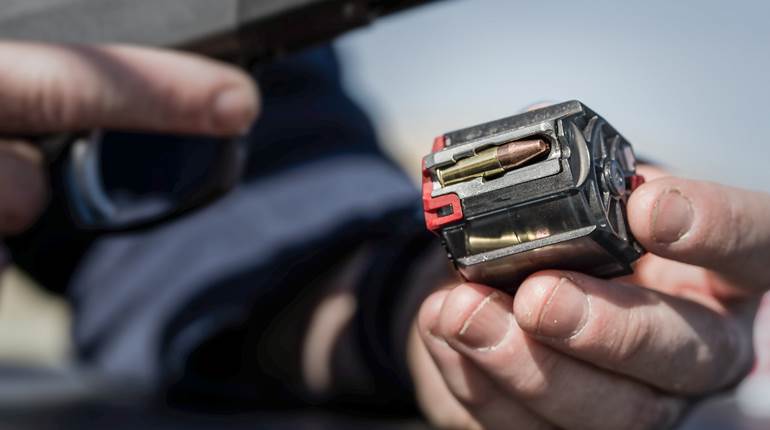
The last quarter of the 19th century was a flurry of activity and innovation. With America leading the way, the industrial revolution was coming into its own as the leader in improving peoples’ lives, not only in terms of product development but financially as well. Real innovation was occurring at a rate previously unseen. In the firearms’ industry, improvements were not simply a change in finish or barrel length; wholesale changes in basic designs were considered the norm of the day. Such was the case of what became known as the Model 1886 Winchester.
Twenty-five years earlier the world was introduced to the lever-action repeating rifle. The first examples were chambered for low-powered pistol cartridges; the locking mechanisms were simple and not strong enough for real hunting cartridges like those seen in the Sharps single shots. Winchester—the undisputed king of lever-actions—scaled up its wildly popular Model 1873 to handle some of the large-bore hunting cartridges or mimics of them. The Model 1876 Winchester used the same toggle-link lockup of the 1873 Model to harness cartridges like .45-75, .40-60, .45-60 and .50-90 Express. These were good cartridges for their time, but the .45-70 Government cartridge had the tremendous advantage of being made in huge amounts under a government contract, thus it was readily available and less expensive than newer proprietary rounds. Like the exceedingly popular—but expensive—Sharps rifle cartridges, the .45-70 was too long to fit into the Model 1876 receiver. There was a need for a strong lever-action repeater capable of operating with these long and powerful rounds.
Enter a 21-year-old Mormon gun maker from Ogden, Utah. John Moses Browning had already designed and sold a popular and graceful single-shot rifle to Winchester at age 19. T.G. Bennet, the representative from Winchester who purchased the manufacturing rights for the Model 1885 single-shot rifle from Browning, returned with not only the agreement but also a working wooden model of a lever-action repeater that incorporated the camming and bolt-locking characteristics of the single shot. Further refinement by Browning and Winchester resulted in the birth of the Model 1886 rifle—U.S. patent 306,577—on October 14, 1884.
The toggle-link lockup was jettisoned, replaced by a pair of vertically sliding pieces of steel situated on each side of the receiver and bolt. These locking lugs served to completely restrain the bolt from any movement due to the thrust of the cartridge firing upon it. Then an operating system run by an looped underlever had to be choreographed that allowed the bolt to be moved rearward while a carrier assembly retrieved a fresh cartridge from the tubular magazine set under the barrel and feed the cartridge up to where the bolt can push it more or less straight into the chamber as it is locked up.
Browning worked mostly with hand tools and had little machinery to promote mass production. His rifles were, therefore, largely handmade and hand fitted. This is the reason often cited for the extremely smooth operating of a Browning-designed firearm. Paradoxically, it is also the reason why Browning guns were more costly. Although the Model ’86 had an initial run of 49 years, only about 160,000 copies were produced. Winchester realized the ’86 was a premium rifle, and it offered many different add-ons and chamberings.
Rifles, muskets, carbines, half-magazine and almost any imagined barrel contour were available on special order, as were finishes, wood quality and engraving. No less than 19 different chamberings were available during the initial production of the ’86. Most popular by far was the .45-70, but cartridges as large as the .50-100-450 were made. Some cartridges like the .45-90-2.4 had to be loaded with shorter and lighter 300- and 350-grain bullets in order to function through the rifle. Such rounds were designated WCF (Winchester Center Fire) or Express loads.
The 1886 Model was typically furnished with a buckhorn-style rear sight adjustable for elevation by a serrated elevator set in the middle of the sight leaf. Windage was adjusted by drifting the sight within its dovetail. Most tangs were drilled and tapped for an additional screw used to mount a tang peep sight; the other hole serving double duty as a mounting screw for holding the action to the stock. Rarely seen was a three-leaf Express Sight that fit into the barrel dovetail. The rear notch had a platinum insert in order to facilitate picking up the sight in low-light conditions. Front sight configurations ran the gamut of the day and were typically held in place within the barrel dovetail with a set screw. A very few examples were factory fitted with a double-set trigger. The standard single trigger was the most robust of any Winchester lever-action, yet it is one of the smoothest and lightest as well.
A common complaint of lever-action rifles is the dinky loading port that seems better designed to install parallel cuts in the operator’s thumb. The ’86’s loading port is a three-piece design that, again, indicates the robust character of the rifle. Loading the rifle is markedly easier on the thumb than with other lever-actions.
Buttplates on the ’86 were varied as well. Most common is the curved crescent rifle-style as seen on rifles of the day. Wickedly beautiful, they are just as wicked on the shoulder, given the rifle’s powerful cartridges. Military carbine-style plates, which are not as pronounced in curvature and have no sharp edges to gouge the shoulder, are seen but are relatively rare. The same is true of the aesthetically droll, but very comfortable, shotgun-style buttplate. Long, wide and flat to spread the recoil over a larger area, the shotgun-style buttplate makes an otherwise abusive and painful rifle a joy to shoot.
The overwhelming majority of stock configurations were of the straight type. Pistol-gripped stocks, with an accompanied curved finger lever, were available on special order. The earliest of these rifles had the pistol grip capped with buffalo horn or ebony. Later examples have their grips capped with hard rubber.
Standard metal finish was a blued barrel, magazine and sights with color-casehardened receivers and finger levers. Somewhere near serial number 122,000 the receivers were given a standard blue finish. Special finishing, including gold, nickel and silver plating were offered, but surviving examples are very rare. Engraving with or without inlays was also available as a factory option.
Barrel lengths ranged from 20 inches all the way up to 36 inches. Standard length for a rifle was 26 inches; carbines featured a 22-inch barrel. An “Extra Light” carbine had a 22-inch round barrel.
Browning’s big lever-action was so far ahead of its time that when smokeless powder replaced black powder, the only change needed in the rifle was to use nickel-steel in the barrels. My own 1895-vintage ’86, chambered in .45-90 WCF has a barrel marked “Nickel Steel,” and although it is 119 years old it can still put five 350-grain bullets within 3 inches at 100 yards. That’s staying power.
It was bottle-necked cartridges in bolt-action rifles, combined with high manufacturing costs and The Depression that killed off the 1886 Winchester in 1935. A modest revival and remake in the form of the Model 71 in .348 Winchester replaced the time-honored ’86, lasting until 1958. It was a favorite of elk and moose hunters, but the power, speed and prevalence of the bolt-action in magnum chamberings dealt the final blow to the big lever-gun.
However, a superb design combined with the memories and status garnered over the years has resulted in replicas of all of the Winchester lever-actions. Limited runs from Browning, Winchester, as well as some Italian gun makers keep these guns alive and working even in this modern age of super-accurate, long-range sniper rifles. Several hunters near me hunt with original or replica ’86s each year, and most of them get their elk annually. They know the limitations of the cartridge and their own, as well. These hunters have the skill to get within 200 yards of an elk and the patience and ability to make the shot.






































